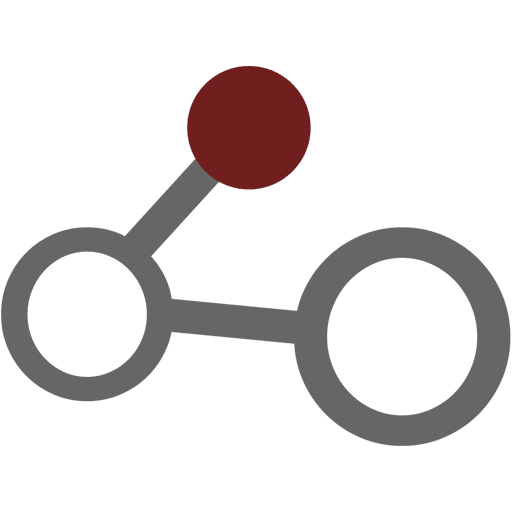Learn how to recruit and hire top technical leaders for your coatings company. Discover key considerations for leadership roles and ensure the right strategic fit for your organization.
Finding the right technical leader who can balance scientific knowledge with strategic business acumen is a critical challenge that can make or break a company’s competitive edge.
Roles
The technical leadership landscape encompasses various positions, each with distinct responsibilities and scope.
Executive Level Positions
At the highest level, organizations typically have a Chief Technical Officer (CTO) or Chief Science Officer (CSO). In some cases, this role combines with sustainability initiatives, becoming a Chief Science and Sustainability Officer (CSSO). These positions focus on overall technical strategy and innovation direction.
Senior Management
Below the C-suite, or sometimes instead of a C-suite technical leader, companies often have Vice Presidents of Technology or Innovation. These roles typically lead major technical initiatives and guide long-term research and development strategies.
Directors and Managers
Technical Directors or R&D Directors manage day-to-day operations while implementing strategic initiatives and leading projects with multiple team members. In some organizations, the role expands to Research, Development, and Innovation Director, encompassing a broader scope of responsibilities. This level is typically the “connector” between business strategy and pure technical focus, and for many smaller companies the Technical Director is the highest-level technical role in the organization, managing a team of chemists and potentially technicians.
Purpose of the Hire: Discovery Phase

Assessing Technical Needs
The first crucial decision in hiring a technical leader is determining whether your primary need is deep domain expertise or strategic leadership capabilities. This choice depends largely on your existing technical strength and organizational structure. Consider whether your current team already possesses strong technical expertise that needs strategic direction, or if you require someone who can provide both technical depth and leadership.
Innovation Focus
Your company’s relationship with innovation shapes the type of leader you need. Innovation-driven companies require leaders who can spearhead new product development and drive creative solutions. Organizations focused on process optimization need leaders who excel at improving efficiency and maintaining quality standards. The ideal candidate’s background should align with your innovation priorities and business model.
Strategic Alignment
A technical leader must seamlessly integrate with your organization’s broader objectives. They should demonstrate:
- Clear understanding of business priorities and goals
- Ability to align technical capabilities with market demands
- Strong strategic planning skills
- Experience in similar market positions
Impact of the New Hire: Goals
Business Integration
The technical leader serves as a crucial bridge between scientific capabilities and business objectives. They must understand market dynamics while maintaining technical credibility. This involves developing strong relationships with marketing and sales teams, translating technical capabilities into market opportunities, and ensuring that innovation efforts align with customer needs.
Innovation Leadership
Success in driving innovation requires a multifaceted approach. Technical leaders need to anticipate future market needs by staying ahead of industry trends and maintaining strong networks within the technical community. They should be able to develop comprehensive technology roadmaps that balance short-term deliverables with long-term strategic goals.
Skills

Technical Expertise
While technical knowledge forms the foundation of the role, the depth required varies based on your organization’s existing expertise. The ideal candidate should possess broad industry knowledge and scientific understanding, while demonstrating the ability to evaluate technical feasibility of new initiatives and guide research direction.
Leadership Capabilities
Leadership skills often prove more crucial than pure technical expertise. Today’s technical leaders need to:
- Drive strategic initiatives
- Build and develop high-performing teams
- Navigate complex organizational dynamics
- Communicate effectively across departments
Business Integration
The successful technical leader must bridge the gap between technical innovation and business success. This requires a comprehensive understanding of market dynamics, financial principles, and strategic planning. They should be able to translate technical capabilities into business opportunities while maintaining strong relationships with stakeholders across the organization – and potentially with outside resources such as university research labs.
Tools for Success
Strategic Planning
Effective technical leadership requires robust support systems and tools. Technical leaders need access to comprehensive market intelligence platforms and effective project management systems. These tools should enable them to track industry trends, manage research portfolios, and measure innovation outcomes effectively.
Communication Platforms
Technical leaders rely heavily on:
- Collaborative workflow systems
- Project management tools
- Technical documentation platforms
- Strategic planning software
Technical Leader Hiring FAQs
How do I assess a technical leader’s ability to innovate?
The most effective way to assess innovation capability is to examine the concrete commercial success of their previous projects. Look specifically at the dollar value of products they’ve successfully commercialized and led to market. A strong technical leader should be able to point to specific examples of innovations they’ve guided from concept through to successful market launch. Pay particular attention to their track record of not just developing new ideas, but successfully implementing them in ways that generate revenue and create business value.
How can I evaluate their understanding of regulatory requirements?
The best indicator of regulatory expertise comes from examining their previous scope of responsibility. Consider whether they’ve had direct experience managing regulatory functions within their organizations. Strong candidates will demonstrate not just knowledge of compliance requirements, but also show how they’ve successfully integrated regulatory considerations into the development process. Their experience should reflect a practical understanding of how to navigate regulatory challenges while maintaining innovation momentum.
What metrics should I use to measure the success of a technical leader?
Success measurement should focus on both quantitative and qualitative metrics over a 3-5 year period. The most telling indicator is often the percentage of company revenue generated from new products developed under their leadership. This should be balanced with the actual number of successful product launches and their overall impact on the business. Consider also their project success rate and the return on R&D investment. A truly effective technical leader will show strong performance across multiple metrics, indicating their ability to consistently drive innovation while maintaining commercial viability.
Securing Your Next Tech Leader
Hiring the right technical leader requires careful consideration of both technical expertise and leadership capabilities. Success in this role demands a unique combination of scientific knowledge, business acumen, and strategic thinking.
By focusing on these key areas during the hiring process, you can find a leader who will drive innovation and growth while effectively bridging the gap between technical capabilities and business objectives.





